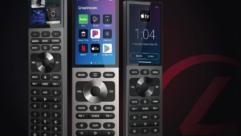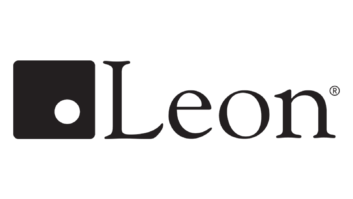
One-stop Control
Mar 1, 2007 12:00 PM,
By Carolyn Heinze
Miami nightclub opts for ease of use and total integration.
It’s tough to impress the fast-moving Miami party crowd, and nightclubs located in this hot but fickle scene are constantly seeking new ways to outdo one another. Bricks Nightclub, which opened last summer, is no exception to the rule, but state-of-the-art AV technology that was integrated into the venue has given the facility a major weapon in its battle to stand apart from the competition.

A Crestron Pro2 control system and a High End DL.2 lighting system help create the holographic effects and live images projected throughout Bricks Nightclub.
Mark Burns, the club’s general manager, says that one of the main goals he wished to achieve with the AV system was one-stop control.
“The biggest problem I’ve had in the other nightclubs that I’ve managed is that you have to go to five different places to make one thing happen,” he says. “We were looking for one place to get centralized control: setting the lights up for the evening, getting the music to go where we want it, and things like that. We didn’t want to have to run around to turn different knobs and dials.”
Ease of operation was also a high priority, Burns adds, because he and his colleagues don’t have a lot of time to train staff on the finer points of operating AV equipment.
“I also wanted it to be simple to explain to other people, in terms of how to use it,” Burns says. “It’s easy enough to teach me, but it’s not always easy to train someone else. We like to have simplified, one-button control.”
Bricks called upon Garden City, N.Y.-based systems integration firm Lips Electronics to design and install a system that would fulfill these requirements. Company owner Robert Lippolis set about specifying audio, video, and lighting technology for the club’s four main zones: the main dance floor, two courtyard areas, and a rooftop bar known as Sky Lounge.

Lips Electronics specified the audio, video, and lighting technology for Bricks Nightclub’s four main zones: the main dance floor, two courtyard areas, and a rooftop bar known as Sky Lounge (pictured).
TOTAL CONTROL
The system, which is IP-addressed and controlled, is constructed around a Crestron Electronics Pro2 control system, which serves as the brain. Lighting effects are achieved through eight High End Systems DL.2 digital lighting fixtures with built-in cameras, which combine lighting and video technology to produce a plethora of effects — many of which are in 3D.
The DL.2’s are yoke-mounted, giving them the ability to move and, therefore, capture live images from virtually anywhere in the club. The live images then can be projected. These units sit on the same network as the control system, enabling them to share content. A Crestron PVID 8×3 video switcher provides full matrixing, and a High End Systems Hog iPC lighting console commands the PVID switcher via the Crestron Pro2 processor.
Eight High End Systems Studio Command luminaries, 12 High End Systems Color Command automated color wash fixtures, and 500 RGB LED lighting luminaries by Color Kinetics complete the lighting system.
Dean Iacuzzo, technical director at Lips Electronics, says that some special measures were taken to interface the lighting with the Crestron control system. Traditionally, the Hog iPC lighting console is used in live-production applications, such as concerts and theatrical presentations, while the Crestron system is more typically adapted to architectural lighting. Iacuzzo therefore wrote software that tied the two together more seamlessly.
“I needed to keep it simple and compact because it had to work every time,” Iacuzzo says. “There was no chance of having the general manager going to the lighting board each night to push a lot of buttons. It had to work every time.” The same concept applied to the club’s lighting technician. “The lighting board operator, who runs the system every night, didn’t want to reset his board so that the architectural lights worked properly.”

Three Crestron TPS-2000L touchpanels, two of which are located on the wall above the turntables in the DJ booth (pictured) provide total facility control, including the lighting, thermostats, video, and audio throughout the club, as well as preview options before the many 3D effects go live.
The audio system at Bricks Nightclub is comprised of JBL loudspeakers powered by Crown amplifiers. Sound processing is DSP technology, and audio routing to the courtyard entrances and Sky Lounge is achieved through a Crestron CNX-PAD8.
Three Crestron TPS-2000L touchpanels provide facility control, as well as preview options before effects go live. “We have the ability to preview the DL.2s at the other touchpanels in the club. However, I didn’t see it necessary to implement that,” Iacuzzo says.
“I came up with the idea that if you were able to preview the camera in the DL.2, not only does it have the ability to switch the image of a person dancing out to everyone else in the club, it also has the ability for the lighting operator to use it like a targeting computer so that he can track who he wants to see before he puts it live on the screen,” Iacuzzo says. “It’s like a B-roll screen in a video production facility.”
The club also makes use of a Crestron TPMC wireless touchpanel, and a Crestron TPS-15 touchpanel. Crestron XPanel software allows the system to be controlled with the club’s PCs as well.
The main dance floor boasts an octagon-shaped privacy glass that, with the push of a button, transforms from a frosted state to a clear one. It’s onto this surface that the club’s holographic “cryogenic” effect is projected, with supporting images being projected onto various wall surfaces throughout the venue.
“A Crestron relay module tells the privacy glass to go clear or frosted,” Iacuzzo says. “That also had to be interfaced with the lighting board.”

Bricks Nightclub counted on Crestron’s control technology to provide club management with a system that was easy to understand and use.
A CLEAR CHOICE
Lippolis recounts that the club’s desire for total integration made the Crestron control system a logical choice.
“Crestron is very straightforward, and we know the technology. I have been a Crestron dealer for a long time,” he says. “This was a chance to integrate their technology. They happen to make great switches. The touchpanels are incredible. With the presets that we programmed, such as day, night, on, and off, the people who operate the club can operate the system with one touch of a button.”
Iacuzzo says that centralized control enables club operators to avoid having to become engineers in order to man their technical systems.
“In most of the nightclubs I have designed and built, they tend to have a back-of-the-house lighting system that consists of 18 dimmers in a row,” he says. “In order to get them to preset levels, they take a marker and mark on the dimmer where they want it. Someone has to set it every night, and if someone bumps into it, it gets knocked off the mark. With Crestron, I can tell the general manager to go to the touchpanel, push a button, and it will configure itself into either daytime or nighttime mode, and you can walk away and forget about it.”
For More Information
Bricks Nightclub
www.bricksnightclub.com
Crestron Electronics
www.crestron.com
Crown
www.crownaudio.com
High End Systems
www.highend.com
Color Kinetics
www.colorkinetics.com
Carolyn Heinze(carolynheinze.blogspot.com) is a freelance writer/editor.










